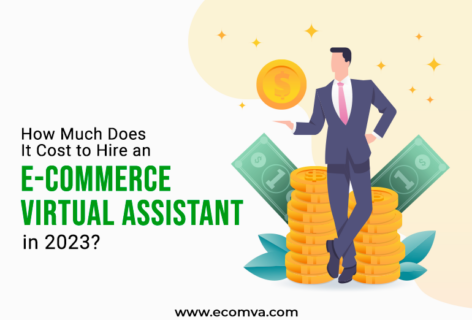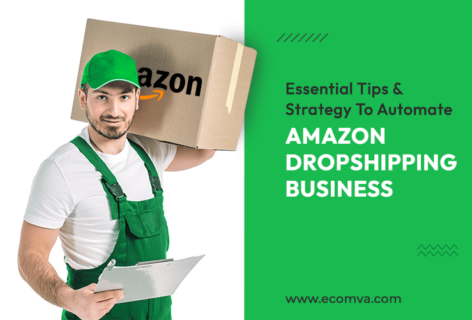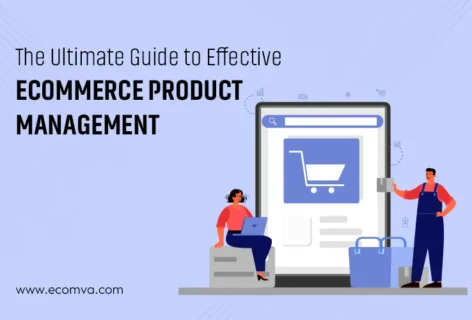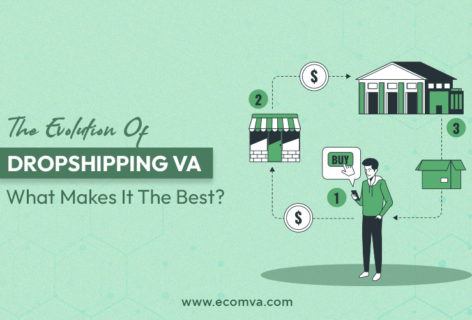Ecommerce SEO vs. Traditional SEO: Key Differences and Strategies
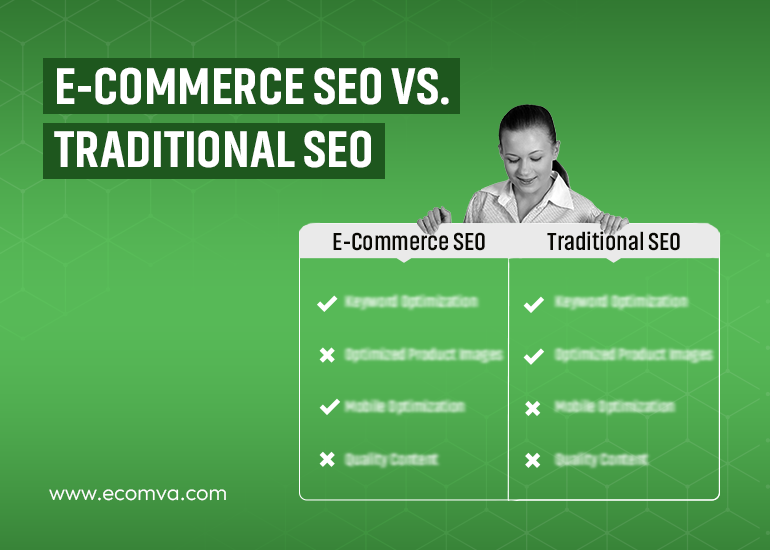
If you’re not computer savvy, learning SEO might be like attempting to solve a challenging jigsaw. To further complicate matters, you discover that there are several SEO strategies based on the platform you are utilizing.
Search Engine Optimization (SEO) is fundamental for every kind of website, whether it is ecommerce or traditional. Both ecommerce and traditional SEO techniques can produce a steady flow of website traffic without requiring payment for each click if they are used successfully.
A minimum of 43% of ecommerce traffic originates from organic searches on Google.
Both traditional websites and ecommerce platforms use SEO to draw in visitors; however, the approaches and objectives vary greatly. Businesses need to comprehend these differences in order to succeed in the competitive online environment.
What is traditional SEO?
To achieve a higher placement on search engine results pages, traditional SEO aims to elevate the rankings of websites that satisfy information needs, news portals, educational blogs, and niche-specific platforms. Its primary purpose is to attract those individuals who seek particular resources or knowledge.
Such methods concentrate greatly on producing high-quality materials, building valuable links, and optimizing the user experience within the site. Success is usually measured through traffic volume, engagement metrics (time spent on site, bounce rate), and brand awareness among the audience, targeted geographically or demographically.
What is ecommerce SEO?
The chief aim of ecommerce SEO services is to increase a web store’s sales and conversions. While user experience and website optimization are still important, certain strategies for products take priority in ecommerce SEO.
Keyword research’s major objective is to prioritize transactional keywords such as – “buying diamond earrings near me”; these display an obvious intent to purchase. Content creation concentrates on authoring informative buying guides, captivating product descriptions, and customer testimonials.
ecommerce marketplace management and SEO success are measured through high conversion rates. This is the percentage of site visitors who turn into paying clients.
Major differences between ecommerce SEO and traditional SEO
Keyword intent
Traditional SEO focuses on informative keywords (like “history of diamonds”) that respond to user searches.
Transactional keywords with a clear purchase intent are given priority in ecommerce SEO by the ecommerce virtual assistant. These keywords frequently include product names, variants of “buy” or “shop,” and, where appropriate, geographical features (e.g., “diamond earrings Chicago”).
Content strategy
Traditional websites usually create informative blog posts, articles, or news pieces.
Ecommerce websites place a high priority on keyword-optimized product descriptions, but many also go above and beyond by including comprehensive product reviews, user-friendly buying tips, and product page SEO with well-planned category pages that highlight the range of products and encourage purchases.
Technical nuances
Even though both require a mobile-friendly website and quick loading speed, ecommerce SEO service places more emphasis on:
- Product page optimization with high-quality product images from multiple angles
- Faceted navigation for simple product filtering by size, color, or material
- A safe and user-friendly checkout process to reduce cart abandonment
Image optimization
Both SEO strategies require high-quality photos. Ecommerce SEO, on the other hand, goes one step farther.
Product photos have to be crisp, high-resolution, and feature a variety of viewpoints to highlight fine features and artistry. Also, use alt text that contains relevant keywords to increase a product’s discoverability in search results.
On-page optimization
Careful on-page optimization is necessary for both SEO strategies to make sure that the content of websites complies with user intent and search engine algorithms. The focus is a little different, though.
While on-page SEO for ecommerce places more emphasis on keyword optimization inside product descriptions, titles, and category pages to ensure product discoverability for customers with buy intent, traditional SEO techniques promote informative content targeting more general and informational keywords.
Content freshness
Maintaining the relevancy of website content is essential for both SEO tactics. This means that traditional websites should consistently provide new blog posts, articles, or news reports that discuss current business trends, present fresh viewpoints, or offer insightful updates on already-covered subjects.
Fresh content is beneficial to ecommerce SEO as well, but it should emphasize product details. Users are guaranteed to have access to the most up-to-date information through periodic modifications to product descriptions, prices, and promotions.
Internal linking
Building a network of linked pages within your website is known as strategic internal linking. Internal linking is a technique used by traditional SEO to connect related blog posts, articles, or landing pages.
By carefully connecting product pages, category pages, and relevant blogs (such as buying guides or product reviews), ecommerce off-page SEO strategies go beyond simple internal linking.
Such ecommerce link building makes your website easier to navigate, improves the user experience, and keeps visitors interested in your ecommerce ecosystem.
Customer reviews and user-generated content
Good ratings and reviews serve as social evidence that demonstrates to prospective buyers that your products are of high caliber and worth it. It’s critical to promote client testimonials on your website and product pages.
You can add user-generated content to social media sites as well. Including user-generated images or videos of your products in authentic environments can greatly increase brand recognition and have an impact on purchasing choices.
Strategies for ecommerce SEO success
Leverage the power of long-tail keywords
Ecommerce keyword research does not solely focus on short, high-volume keywords. They might face intense competition even if they appear appealing. Long-tail keywords, which are more specialized and frequently have less competition, are ideal for ecommerce SEO.
Focus on long-tail keywords that include the location of the user (e.g., “unique silver earrings Chicago”) or certain features of the product (e.g., “handmade rose gold earrings with gemstones”).
Embrace rich snippets and structured data
Go beyond basic product descriptions by implementing rich snippets and structured data markup. This gives search engines more detailed information about your products, like brand name, price, availability, and ratings. This might result in more visually beautiful and educational search result snippets that encourage consumers to click through.
Optimize for voice search and mobile
The rise of voice-search assistants like Siri and Alexa is undeniable. Optimize your product descriptions and content with natural language queries people might use while conducting voice searches (e.g., “best diamond earrings for everyday wear”).
Mobile SEO optimization for ecommerce is also crucial because most people these days use mobile for buying online. So, make your website responsive.
Prioritize user reviews and customer testimonials
Testimonials and positive customer reviews are a treasure trove for ecommerce SEO. Promote client testimonials on your product pages and website. Sincere, positive feedback not only increases credibility with prospective clients but also provides insightful social proof that affects buying choices.
Retargeting campaigns
Remarketing strategies have a lot of potential to improve ecommerce SEO. Focus on website visitors who have expressed interest in particular items but have not yet made a purchase. Ecommerce virtual assistants can persuade them to return to your website to finish their transactions with gentle reminders.
Local SEO optimization (if applicable)
Businesses that have physical stores should use local SEO techniques to draw clients from the surrounding region. Add precise details to your Google My Business listing, such as your location, phone number, website URL, and business hours. Ask satisfied customers to write favorable reviews, since these can raise your local search position considerably.
Also, leverage AI-based keyword research and add relevant keywords to your listing to attract more customers.
Strategies for traditional SEO
Topic clusters and pillar content
Use topic clusters and pillar content to create a holistic content strategy that goes beyond individual blog entries as part of AI-driven SEO strategies. While interrelated cluster content dives deeper into particular subtopics related to the primary theme, pillar content acts as a focal point on a wide issue.
This strategy improves your website’s search engine rating and draws in a devoted readership by positioning it as a reliable expert on a specific topic.
Broken link building
Find broken links on reputable websites in your industry. Suggest your relevant content as an alternative link to the website owner. This off-page SEO strategy portrays you as a useful resource within your sector, in addition to helping you obtain beneficial backlinks.
Internal linking strategy
Never undervalue the importance of link-building strategies for traditional websites. Establish thoughtful connections between authoritative content, educational landing pages, and relevant blog entries on your website.
This enhances user navigation on your website, aids in search engines comprehending the structure of your website, and disperses link juice (also known as ranking power) across your website.
Mobile-first indexing
The days of giving desktop website design priority are long gone. Google has embraced mobile-first indexing, as mobile devices account for the majority of online searches.
Make sure the design of your website is responsive, meaning it will adjust to any screen size and provide consumers with a seamless, trouble-free surfing experience on all devices.
Tools and resources for ecommerce SEO
Free Tools
- Google Search Console: Provides valuable insights into website performance, search traffic sources, and keyword ranking.
- Keyword Planner (part of Google Ads) helps with keyword research and understanding search volume and competition for various keywords.
- Google Analytics offers comprehensive website traffic data and user behavior analytics.
- Moz Beginner’s Guide to SEO: A free online resource offering SEO fundamentals and best practices.
Paid Tools
- Ahrefs provides advanced SEO tools for keyword research, competitor analysis, backlink checking, and website audits.
- SEMrush offers a comprehensive suite of SEO tools for keyword research, on-page optimization, competitor analysis, and rank tracking.
- Screaming Frog is a desktop application for crawling your website and identifying technical SEO issues.
- Yoast SEO (Free and Paid Plans): A WordPress plugin that helps with on-page optimization and technical SEO aspects for your website.
Wrapping up!
Your website will make it easier for potential consumers to find you if it is effectively optimized. You must comprehend how search engines rank websites in addition to getting inside your customers’s minds to do it correctly. By making the most of every aspect, you can raise your website’s position. You can get help from traditional or ecommerce SEO services if you want expert SEO insights and good results.

